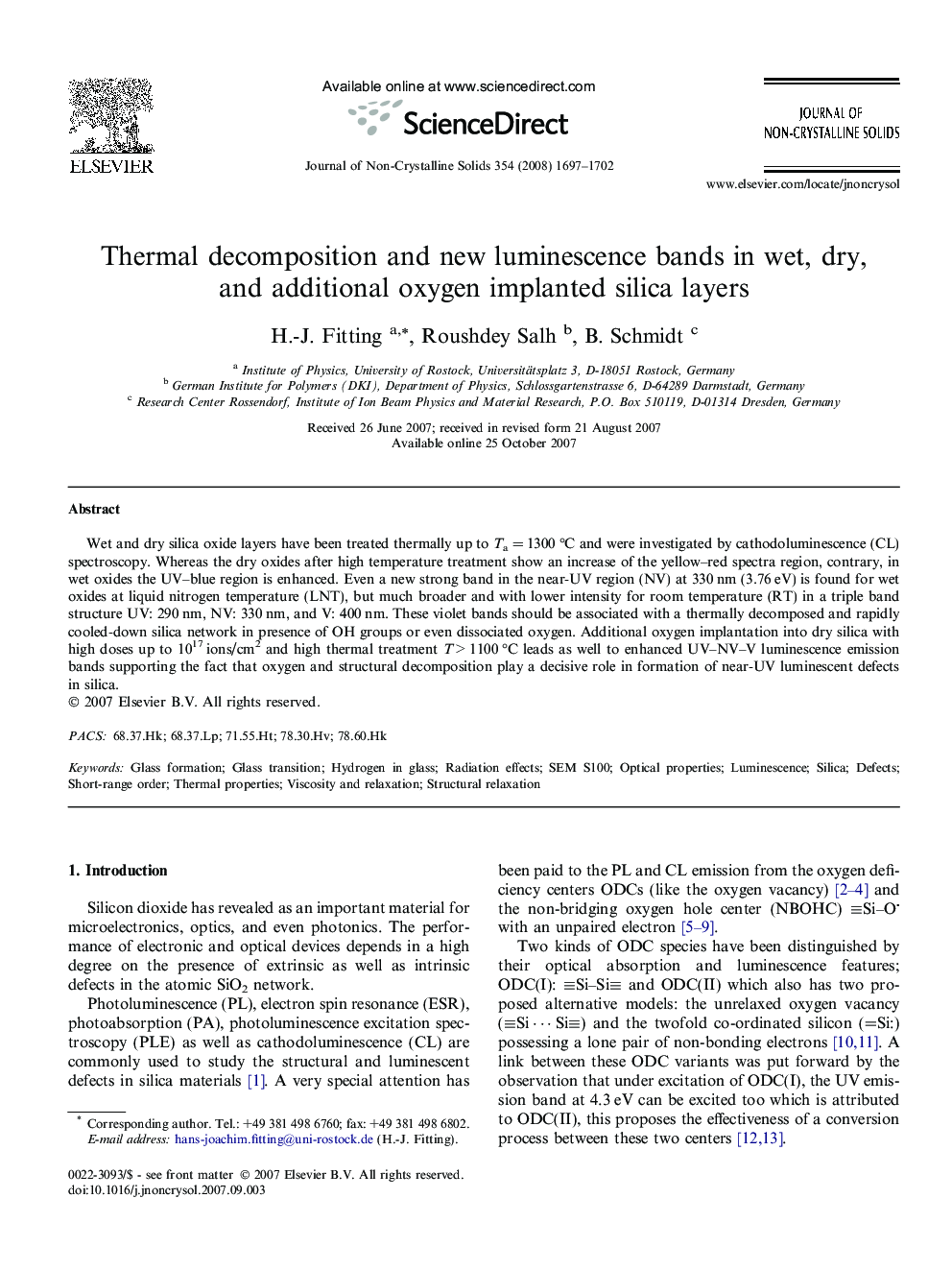| Article ID | Journal | Published Year | Pages | File Type |
|---|---|---|---|---|
| 1484778 | Journal of Non-Crystalline Solids | 2008 | 6 Pages |
Wet and dry silica oxide layers have been treated thermally up to Ta = 1300 °C and were investigated by cathodoluminescence (CL) spectroscopy. Whereas the dry oxides after high temperature treatment show an increase of the yellow–red spectra region, contrary, in wet oxides the UV–blue region is enhanced. Even a new strong band in the near-UV region (NV) at 330 nm (3.76 eV) is found for wet oxides at liquid nitrogen temperature (LNT), but much broader and with lower intensity for room temperature (RT) in a triple band structure UV: 290 nm, NV: 330 nm, and V: 400 nm. These violet bands should be associated with a thermally decomposed and rapidly cooled-down silica network in presence of OH groups or even dissociated oxygen. Additional oxygen implantation into dry silica with high doses up to 1017 ions/cm2 and high thermal treatment T > 1100 °C leads as well to enhanced UV–NV–V luminescence emission bands supporting the fact that oxygen and structural decomposition play a decisive role in formation of near-UV luminescent defects in silica.
